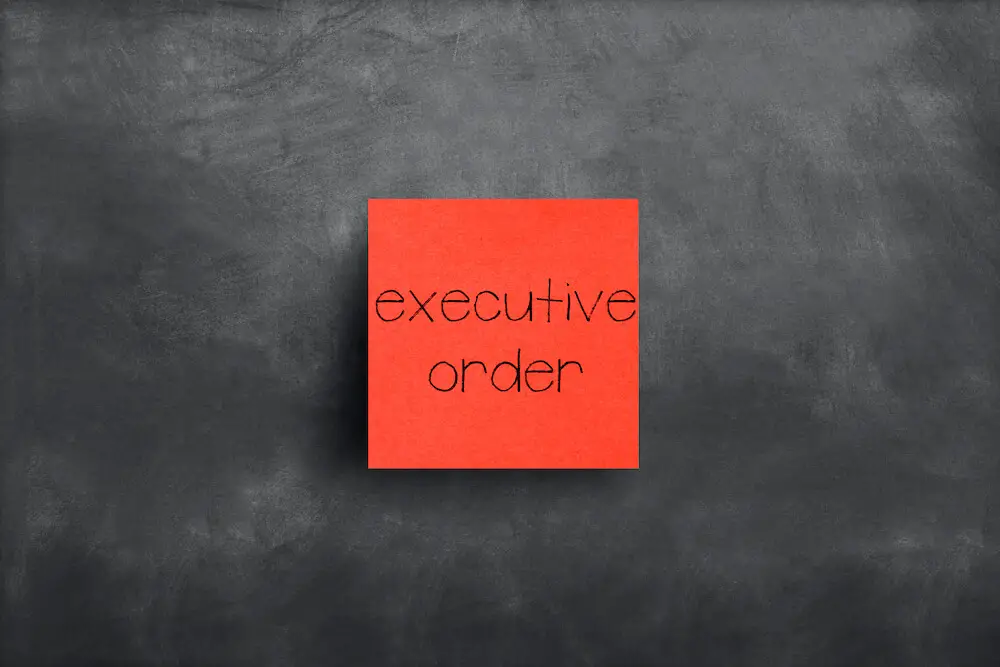As expected, President Biden has issued a new Executive Order (EO) repealing several Executive Orders issued by President Trump. The new order is “Protecting the Federal Workforce”.
The difference in the approaches between Presidents Trump and Biden on these federal labor and employee relations issues is obvious. President Trump’s Orders were for :
- “Developing Efficient, Effective, and Cost-Reducing Approaches to Federal Sector Collective Bargaining”;
- “Ensuring Transparency, Accountability, and Efficiency in Taxpayer-Funded Union Time Use” and,
- “Promoting Accountability and Streamlining Removal Procedures Consistent with Merit System Principles”.
President Biden’s emphasis, as outlined in the Executive Order’s introduction, is:
- Expanding and encouraging unions and bargaining,
- Promoting “good administration”, and
- Applying “merit system principles”.
Revoking EO’s and Requiring More Bargaining
Several of President Trump’s Executive Orders in question were issued in May 2018 and made it easier to fire federal employees and placed significant restrictions on federal employee unions.
The White House is also directing agencies to bargain over permissible, non-mandatory subjects of bargaining with federal employee unions. The new guidance from the Biden administration would presumably start taking effect when labor contracts in agencies are being renegotiated and not under contracts that are already in place.
Another Executive Order issued under President Trump that created consternation from the unions and in the press created a new class of federal employees. The new schedule F category of employees removed many of the hiring and firing restrictions applicable to most of the federal workforce.
According to a White House press release, the Schedule F Executive Order “threatens the critical protections of career employees and provides a pathway to burrow political appointees into the civil service.”
Federal employee unions filed a number of challenges through the legal system to challenge the new restrictions imposed by the Trump administration. These restrictions included:
- Charging unions rent for federal office space and not reimbursing travel expenses or for hours spent appealing worker firings.
- Ordering federal employees to spend 75 percent of their time doing the work for which they were hired as a federal employee.
- Requiring agencies to publicly post union contracts in an online repository.
- Attempting to conclude negotiations with federal employee unions in less than a year.
- Severely restricting official time usage. Official time is the system under which federal employees are paid salary and benefits while working on behalf of the union rather than performing other work. The Executive Order restricted federal employees to 25 percent of their time on union or other non-agency business.
The Executive Orders issued by President Trump would also make it easier to fire a federal employee.
- Reduce the time to improve performance after receiving a bad review. The time to improve was reduced from 120 days to 30 days.
- Agencies were encouraged to remove (fire) poor performers rather than suspending them.
Actions for Federal Agencies
The new EO issued by President Biden instructs agencies to:
…as soon as practicable, suspend, revise, or rescind, or publish for notice and comment proposed rules suspending, revising, or rescinding, the actions identified in the review…
The new EO also picks up on a theme pursued by Democrats during recent national elections. The EO states: “The Director of OPM shall provide a report to the President with recommendations to promote a $15/hour minimum wage for Federal employees.”
No doubt, more actions will be forthcoming as agencies implement the new Executive Order.
Executive Order on Protecting the Federal Workforce by FedSmith Inc. on Scribd





